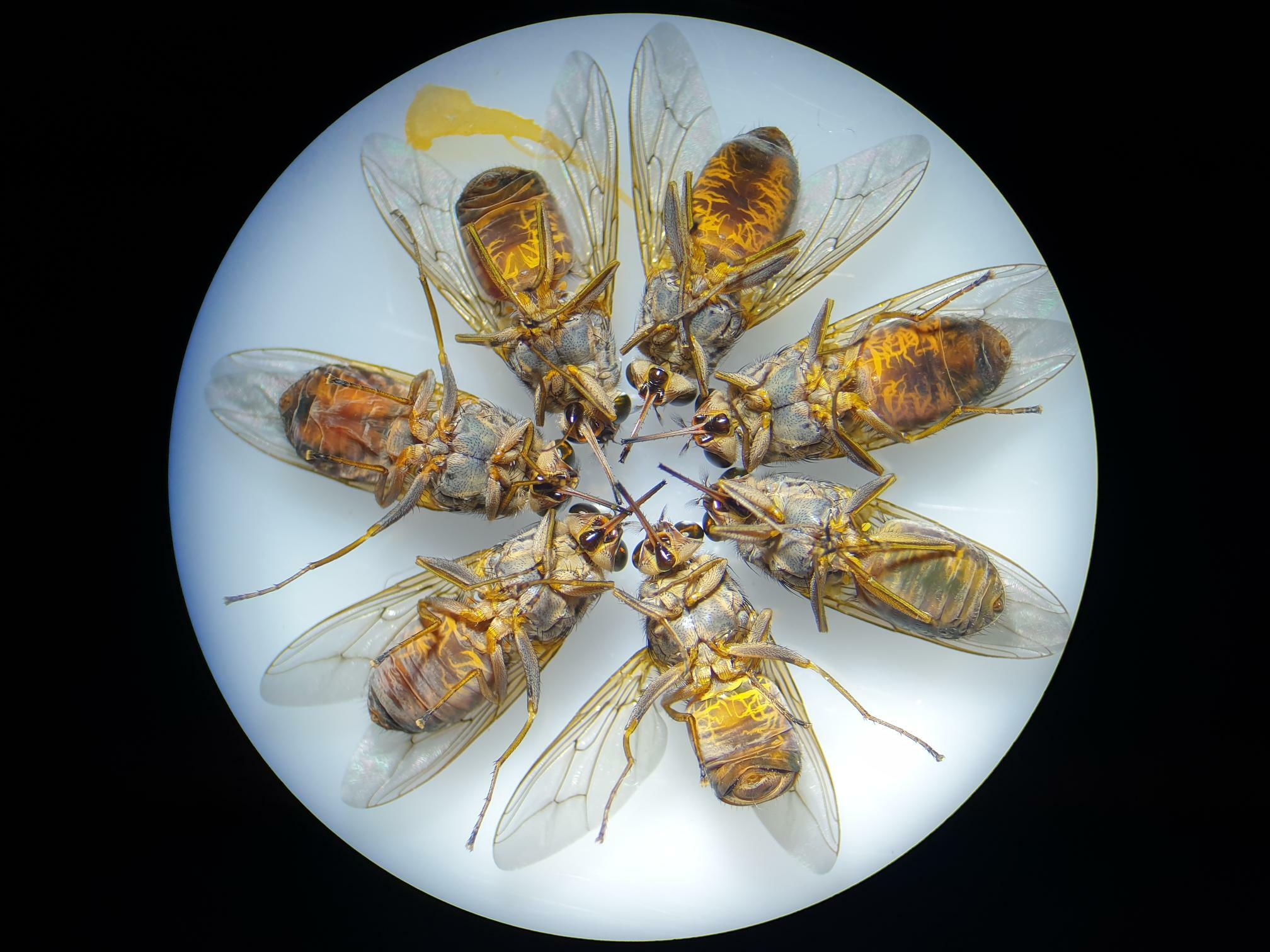
Fascinating research into how a female tsetse fly knows where to find the best birthing sites has been officially published by Philosophical Transactions of The Royal Society.
A tsetse fly survives feeding solely on blood from humans or animals. The female can inject parasites into humans, causing Human African Trypanosomiasis, also called sleeping sickness, which is fatal if untreated.
LSTM’s Honorary Fellow Dr Lee Haines, who is now Associate Professor at the University of Notre Dame, was involved in the research led by Dr Andrea Adden of the Francis Crick Institute. Using LSTM’s tsetse colony, the team investigated the cues that pregnant females used to select birthing, or larviposition sites, demonstrating that material such as leaf litter guides their selection rather than previously thought pheromones.
Unlike most insects, which lay eggs, pregnant tsetse flies give birth to a single larva that rapidly burrows into the soil to pupate. In nature, pupae are often found clustered together, and laboratory-based studies suggest that pregnant tsetse females are attracted to suitable larviposition sites by pupae-released pheromones.
Dr Haines said: “It’s been a long-standing question of tsetse biology: what attracts a heavily pregnant female tsetse fly to a specific birthing site.
“Previous lab-based studies with insectary-reared flies pointed to the existence of a powerful female-attracting pheromone that was released by buried larvae pupating in the soil. However, when this pheromone was tested in the field, it failed to attract flies. This was puzzling as the same tsetse species was tested in both cases.
“Having a large breeding colony of this tsetse species, Glossina morsitans morsitans, at LSTM allowed Dr Adden and I to test hundreds of female tsetse in their final hours of pregnancy - something you cannot do with a smaller tsetse colony. To design our experiments, we had to think like a pregnant tsetse fly under a great deal of pregnancy-related stress. Consequently, we handled and tested these heavily pregnant females very carefully! In the end, our efforts produced beautifully consistent data.
“We tried using various chemical approaches to increase larviposition rates using the pheromone, and even conditioned sand with live pupae, but none of our approaches showed a great effect except for choices that included leaf litter. Placing dried leaves on sand attracted the females like bees to honey. We were excited to observe that our results matched observations from field trials using similar treatments.”
Dr Andrea Adden, added: “Our findings are exciting as they not only address a long-standing debate in the field of tsetse biology, but they also emphasise the importance of taking an animal’s ecology and natural environment into account when designing laboratory experiments.”
Dr Andrea Adden (Crick) and Zach Stavrou-Dowd are working on a BugBitten blog (hosted by BioMedCentral) that showcases this work. It will be released in early May 2023.
Adden Andrea K., Haines Lee R., Acosta-Serrano Álvaro and Prieto-Godino Lucia L. 2023 Tsetse flies (Glossina morsitans morsitans) choose birthing sites guided by substrate cues with no evidence for a role of pheromones Proc. R. Soc. B.2902023003020230030